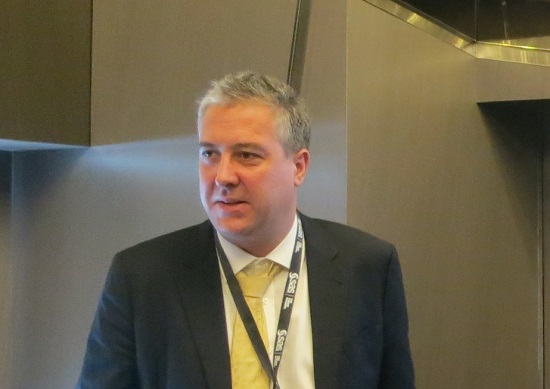Big data analytics key to addressing fraud at the root
By Goh Thean Eu August 28, 2015
- Protection, security solutions can only delay fraud from happening
- Industry-wide collaboration needed to drive down fraud at a national level

WHILE banks and financial services institutions can set up some form of protection fight against fraud, it may not be the most effective way.
According to an executive at analytics solutions provider SAS Institute, setting up protection such as two-factor authentication or firewalls may only delay fraud from happening, at best.
The key to solving the problem at the root level lies in the banks’ ability to analyse and make sense of the pool of data they own, said SAS fraud and money-laundering detection specialist Rohan Langley (pic above).
“Eventually, scammers will break those protections layers, those firewalls – but they still need to send the money somewhere.
“So there will be a surge of funds going from one place to another. That … behaviour cannot be hidden,” he said after his presentation at the recent SAS Forum 2015 in Kuala Lumpur.
During his presentation, Langley said that this is a global problem and that organisations typically lose 5% of their revenue to fraud every year.
“The global loss [as a result of fraud] is estimated to be more than US$3.5 trillion annually,” he said, citing findings from the Association of Certified Fraud Examiners.
Tracking down the mastermind
With big data analytics, organisations would be able to understand customers’ behaviour, and also track anomalies when they occur.
“Anomaly detection … essentially allows you to track activities that deviate from the norm, even by a few percentage points,” said Langley.
“By using analytics, organisations can detect the new patterns. The idea is to stay ahead of the pattern,” he added.
While big data analytics can help organisations reduce fraud activities, a bigger scale of collaboration is needed in order to lower fraud in a country, Langley argued.
“This is because scammers can always go to a different bank for their activities,” he said.
“That’s why the financial services company, the government and related agencies, and other related companies, need to come together.
“Telecommunications companies have all these IP (Internet Protocol) address information, they can still see an email number from one machine to another email number on another machine.
“If the relevant authorities have all these data at hand, it is possible to find out who the mastermind is,” added Langley.
Related Stories:
Is enterprise fraud management just a fad?
Tackling money-laundering and terrorism with technology
SAS partners with MDeC on big data analytics drive
Financial industry’s investments in risk management growing: IDC
For more technology news and the latest updates, follow us on Twitter, LinkedIn or Like us on Facebook.


